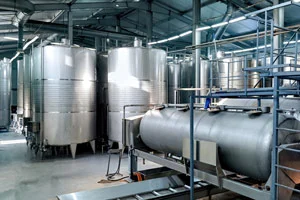As we have discussed in previous articles, this year, due to high temperatures and scarce rain, we expect an imbalance in grapes during the 2022 harvest. Notable imbalances include the size of the berry, with an increase in the skin/pulp ratio, which implies high polyphenol content and, on the other hand, a high pH and low acidity (both due to the content of tartaric acid and malic acid).
These characteristics, together with an elevated alcoholic content, will hinder the development of malolactic fermentation (MLF).
The parameters that will define the difficulty with which the MLF will occur are:
In addition to these conditions, we must also consider the initial malic acid content. The start of the MLF is difficult with malic values below 1 g/l, and the content of total content of total polyphenols (IPT). These conditions are accumulative, that is, the more parameters that deviate from these ideal conditions, the more difficult it will be to start MLF.
If we choose to sow lactic bacteria, we must decide when to add the bacteria to the wine. We can add the bacteria at the beginning of fermentation (co-inoculation), during the last third of fermentation (late co-inoculation) or once it has finished (sequential inoculation) . Knowing the advantages and disadvantages of this practice will help us choose which best suits our work protocol and the profile of the wine we are trying to make.
Co-inoculation, Late Co-inoculation or sequential inoculation. Which to choose?
In years like the current situation, with conditions unfavourable for MLF, co-inoculation is recommended, to permit bacteria to acclimate gradually to the alcohol content and take advantage of the nutrient content of the must before the yeast consumes all the resources. Another scenario in which we recommend co-inoculation is when we need the wine to be ready for the market soon; this practice not only speeds up the MLF, but also reduces the malolactic process by up to three times.
At the aromatic level, in co-inoculated wines, the fruit intensity is greater, reducing lactic notes.
Co-inoculation also has a bioprotective effect, preventing the development of microorganisms during the start of fermentation and their later development during the period between alcoholic and malolactic fermentation. The lower value of residual sugar in wines made with co-inoculation also contributes to this aspect.
Development of microorganisms in spontaneous MLF
Bio-protection through co-inoculation of LB
If the conditions are favourable for MLF, we can opt for sequential inoculation. When we foresee difficulties in alcoholic fermentation, with the possible stopping of fermentation, we should opt for this practice. The main advantage of sequential inoculation is that it lets us take advantage of the period between alcoholic and malolactic fermentation to carry out micro-oxygenation treatments, which favor the stabilisation of the colouring matter and promote the polymerisation of tannins, producing wines that are fuller in the mouth, with greater chromatic intensity.
Finally, late co-inoculation allows us to take advantage of some of the positives of each of these last two practices, that is, to start the acclimatization of the bacteria before the alcoholic level is at a maximum and to lengthen the period between AF and MLF to carry out micro-oxygenation treatment.
At Agrovin, we propose the use of Viniferm OE AG-20 to sow the bacteria, regardless of the time of inoculation. Viniferm OE AG-20 is a liquid bacteria culture to be added directly to the wine.
Oenological characteristics of Viniferm OE AG 20
Due to its high prevalence rate, it quickly establishes itself in the wine medium and prevents the development of other microorganisms, both when it is added both at the beginning of fermentation and once it has finished. Due to its low production of biogenic amines, it respects the varietal character of the wine, increasing fruit sensations.


